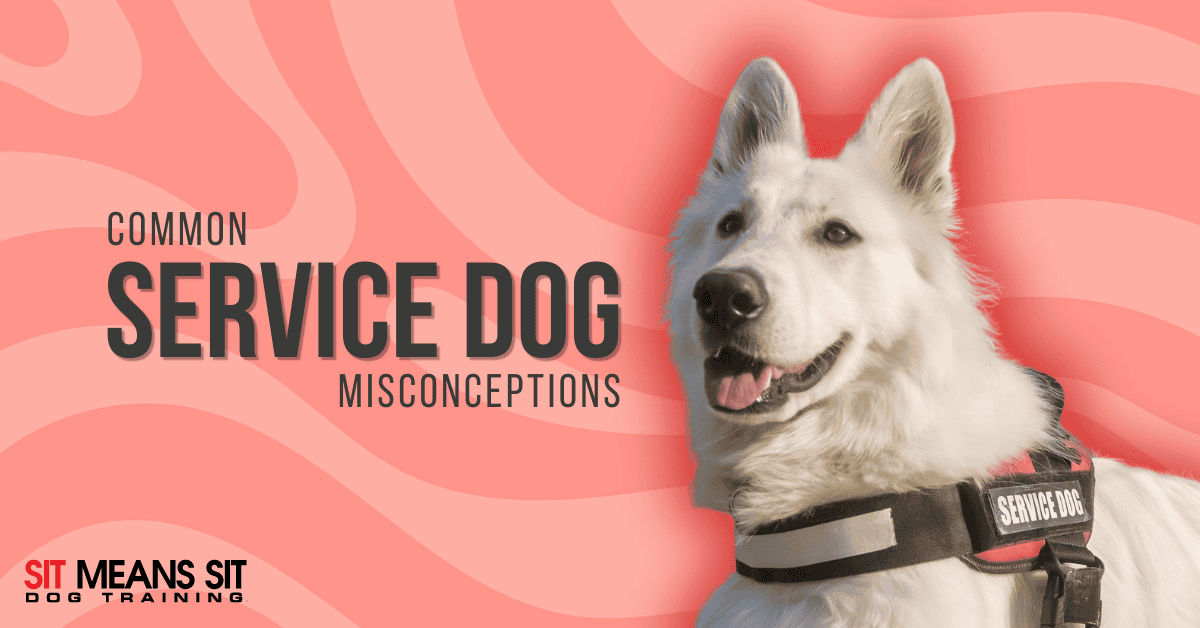Have you ever been walking down the street and seen a polite pup in a vest helping its owner? You could’ve run into a service animal! These canines are extremely professional and can help their owners in more ways than you may realize. The earliest known service dogs were used in the mid-18th century and helped their owners primarily with blindness. Today, service dogs are used by a variety of people with different health and wellness issues, including mental illnesses, seizures, diabetes, blindness, Autism, and deafness, to name a few.
There are plenty of common misconceptions about service animals that create more work for a dog in this position. This guide will bring you one step closer to understanding precisely what these pups do.
Misconception: Emotional Support Animals and Service Animals are the Same
Although service dogs and emotional support animals share some tasks, they are entirely different and ultimately serve different goals.
Emotional support animals are pets that support their owner’s emotional needs. Any pet can be an emotional support animal with written support from a therapist. Service dogs can be considered medical equipment. These pups are specifically trained to perform work or tasks related to their owner’s needs.
Both types of pets can accompany their owners in places where pets would not usually be welcome. However, service animals have more access to public areas than emotional support animals.
Misconception: I Can Pet a Service Animal
Petting a working dog is a big no-no among the service animal community and is universally frowned upon by handlers. It can be highly distracting and disrespectful.
These canines are trained to take care of their loved ones. Distracting them could put their owner at risk of a medical issue or even in danger. While these furry friends may look sweet and well-behaved, it is crucial that you let them do their job.
Misconception: High Energy Breeds Make Bad Service Dogs
Any breed of dog can become a service animal with the proper training and care. Although any breed can technically become a service animal, some breeds are better suited for the training. German shepherds and Labrador Retrievers are commonly selected as these types of pets for their quick learning skills and loving temperaments.
Vocal breeds are trained to alert their owners in high-risk situations or medical abnormalities.
A dog initially takes around two years to complete its entire service training. Some may argue that a service pup’s training is never fully complete. These furry friends will continue to learn and adapt their skills to adapt to their owner’s needs.
Misconception: Handlers Cannot Have More Than One Service Animal
While plenty of people who use service dogs may only have one, there is no limit to the number of animals that a person can use to help with their disabilities. Many handlers actually prefer to have multiple service pets to help divide the responsibilities of each pooch. Unfortunately, the price for training one service animal can range between $20,000 and $50,000, so having more than one service animal is rather expensive.
Misconception: Service Animals Must Wear an Identifying Vest
While many handlers choose to identify their pet with a vest, there is no legal certification or documentation that an animal has to wear while working in public. Many sites will try to scam handlers into registering their dog as a service animal, even though this is completely unnecessary in the process of training your pup. As long as the pooch is properly trained to help aid their handler’s disabilities, they will be considered a service animal.
Furthermore, service animals and their human counterparts are protected by the Americans with Disabilities Act. Businesses may only ask handlers two questions about their disability and animal; any other questions are not permitted under U.S. law.
- Is this animal required because of a disability?
- What work or task has the animal been trained to perform?
The next time you see a service pooch out in public, cheer them on from afar. They’re working hard to keep those around us safe and healthy! Please note that faking a legitimate service animal is frowned upon throughout multiple states in the United States. Michigan State University has compiled a list of every state law regarding the issue.

